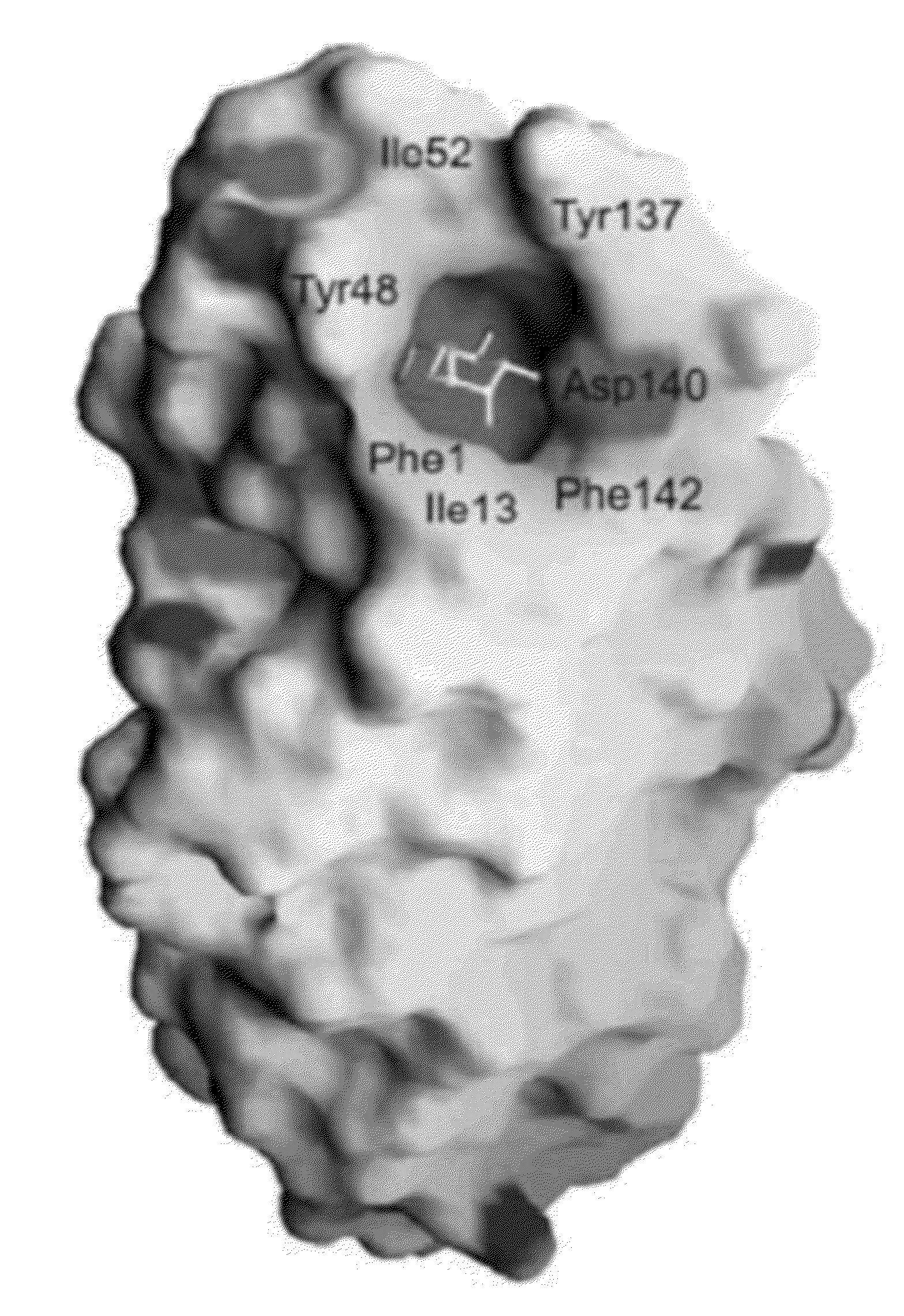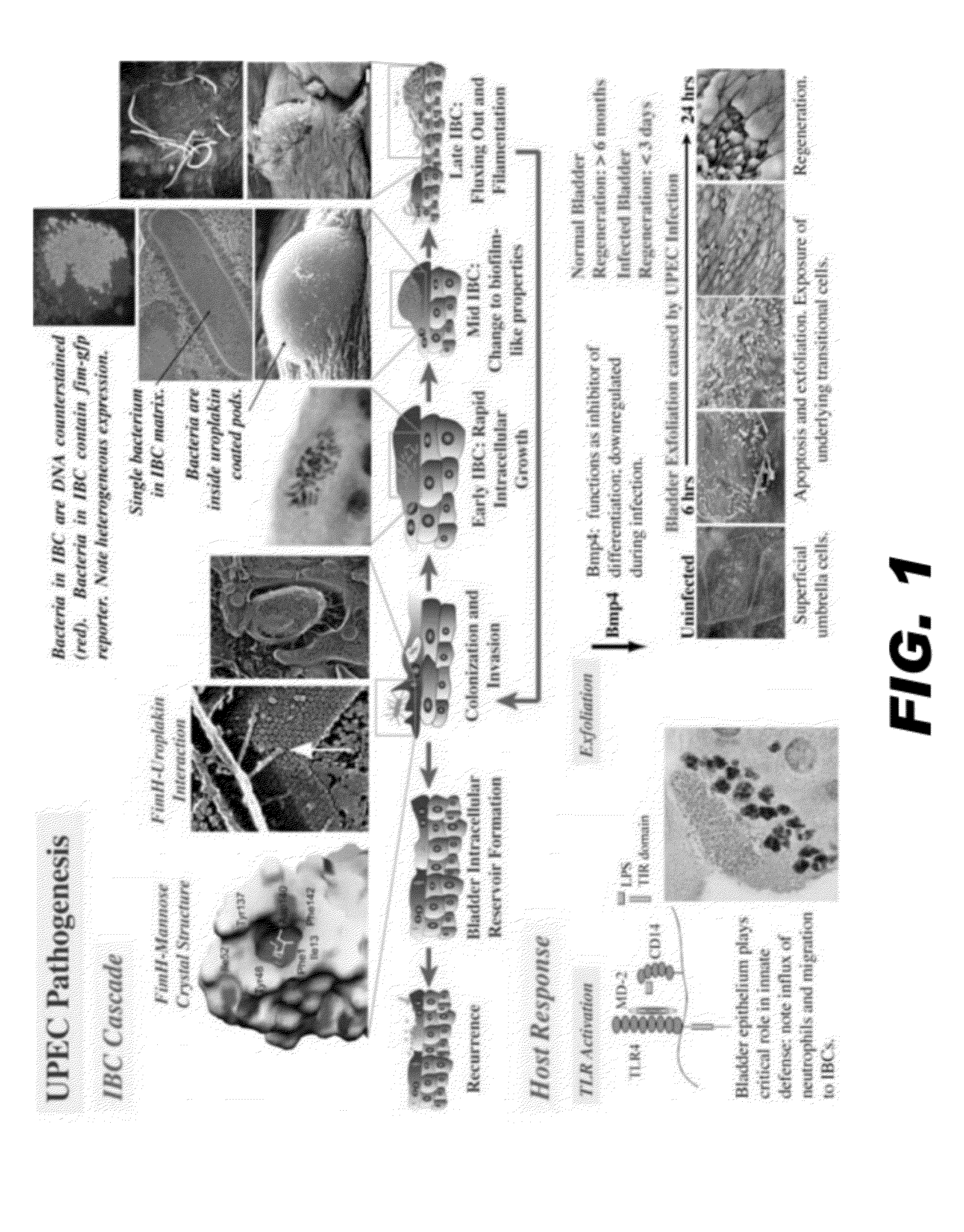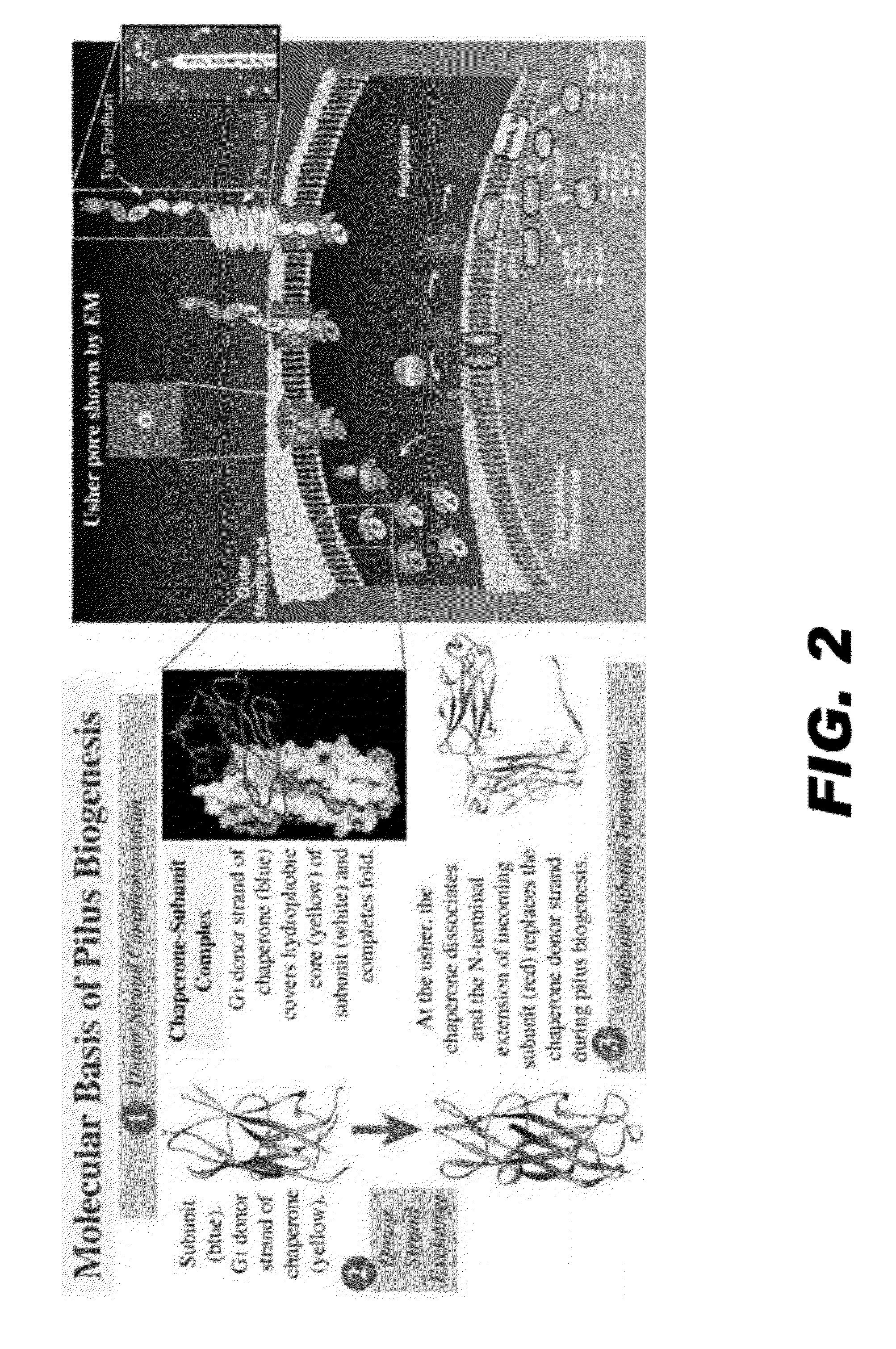Compounds and methods for treating bacterial infections
a technology for bacterial infections and compounds, applied in the direction of antibacterial agents, drug compositions, animal repellents, etc., can solve the problems of serious recurrence and significant problems of recurrent infections, and achieve the effect of reducing the resistance of a bacterium
- Summary
- Abstract
- Description
- Claims
- Application Information
AI Technical Summary
Benefits of technology
Problems solved by technology
Method used
Image
Examples
example 1
Uropathogenic E. coli (UPEC) Pathogenesis in the Urinary Tract
[0505]Clinically, it has been presumed that UPEC infection consists of a relatively simple extracellular colonization of the luminal surface after inoculation of fecal flora into the bladder via the urethra. In contrast, using a murine model of UPEC infection of the UT, the inventors have detailed an unexpectedly complex UPEC pathogenesis cycle that involves both intracellular and extracellular niches (FIG. 1). Using genetic, biochemical and cell biological approaches together with a variety of imaging techniques including transmission, quick freeze-deep etch and scanning electron microscopy, as well as confocal and time lapse video microscopy, the inventors discovered that UPEC invade bladder facet cells via a FimH-dependent mechanism (see below). After invasion, cytoplasmic intracellular bacterial communities (IBCs) are formed. Rapid replication of the initial invading bacteria results in the formation of an early IBC o...
example 2
FimH as a Therapeutic Target
[0506]There are several key implications from understanding UPEC pathogenesis. Mannosides and pilicides that block FimH function will prevent bacterial adherence and invasion and thus prevent bacterial amplification in the IBC and subsequent spreading and repeated rounds of amplification via new generation IBCs. These compounds will have potent therapeutic activity by preventing bacterial expansion which may also have the consequence of eliminating or significantly reducing the QIR thus reducing predisposition to recurrent infection.
Type 1 pili / FimH are Critical for UPEC Pathogenesis in the UT.
[0507]Type 1 pili are essential cystitis virulence determinants. Using scanning and high-resolution EM and the mouse cystitis model developed by the inventors, it was shown that adhesive type 1 piliated bacteria are able to bind and invade host superficial umbrella cells, while UPEC lacking type 1 pili are not. Colonization and invasion of the bladder epithelium is ...
example 3
Genetic Analysis of UPEC Baterial Isolates
[0511]Due to the necessity of FimH, it was tested to see if this gene was under positive selection. Through sequencing of more than 200 isolates, the majority of which were UTI isolates, it was discovered that residues on FimH are evolving under positive selection, none of which were in the mannose binding pocket. These residues are A48, A83 and V184 in UT189 (FIG. 6). Mutants were constructed containing the other naturally occurring amino acids commonly found at the positively selected positions. A mutation of A83 to a serine resulted in a defect in binding in vitro, however only a log drop in bacterial titers were observed in vivo. The double mutant containing a valine at position 48 and an alanine at position 184 resulted in a severe defect in vivo based on bacterial titers and no defect in the ability to bind mannose in vitro. Mutations in the non-positively selected amino acids had no detectable effect. This study shows that residues ou...
PUM
| Property | Measurement | Unit |
|---|---|---|
| resistance | aaaaa | aaaaa |
Abstract
Description
Claims
Application Information
 Login to View More
Login to View More - R&D
- Intellectual Property
- Life Sciences
- Materials
- Tech Scout
- Unparalleled Data Quality
- Higher Quality Content
- 60% Fewer Hallucinations
Browse by: Latest US Patents, China's latest patents, Technical Efficacy Thesaurus, Application Domain, Technology Topic, Popular Technical Reports.
© 2025 PatSnap. All rights reserved.Legal|Privacy policy|Modern Slavery Act Transparency Statement|Sitemap|About US| Contact US: help@patsnap.com



